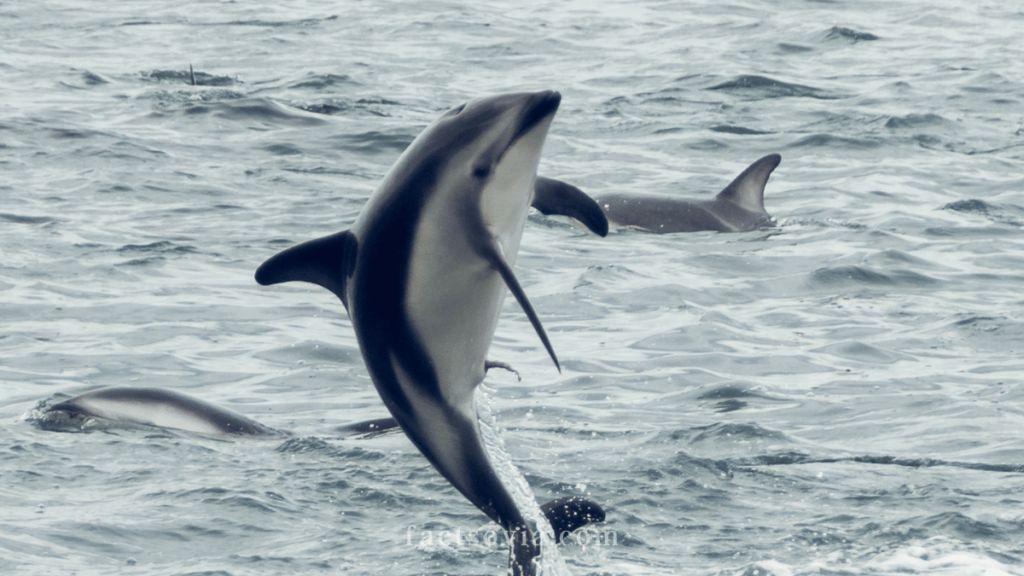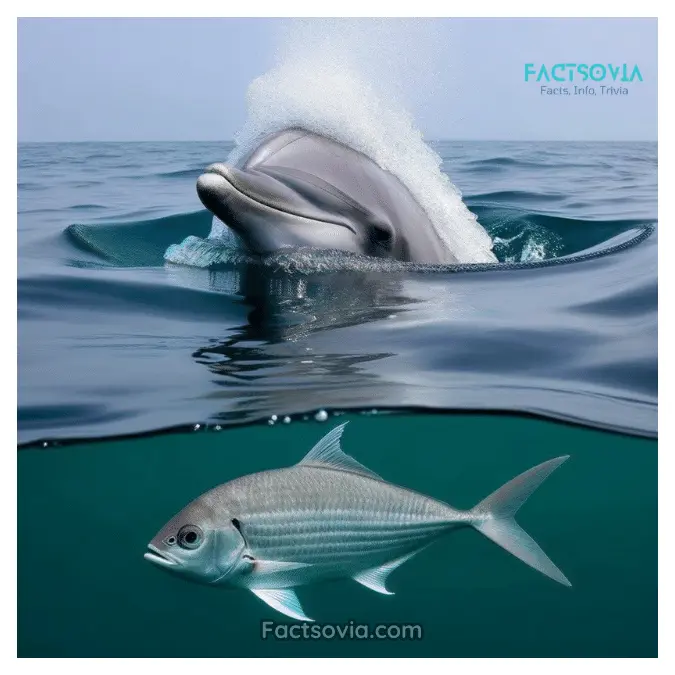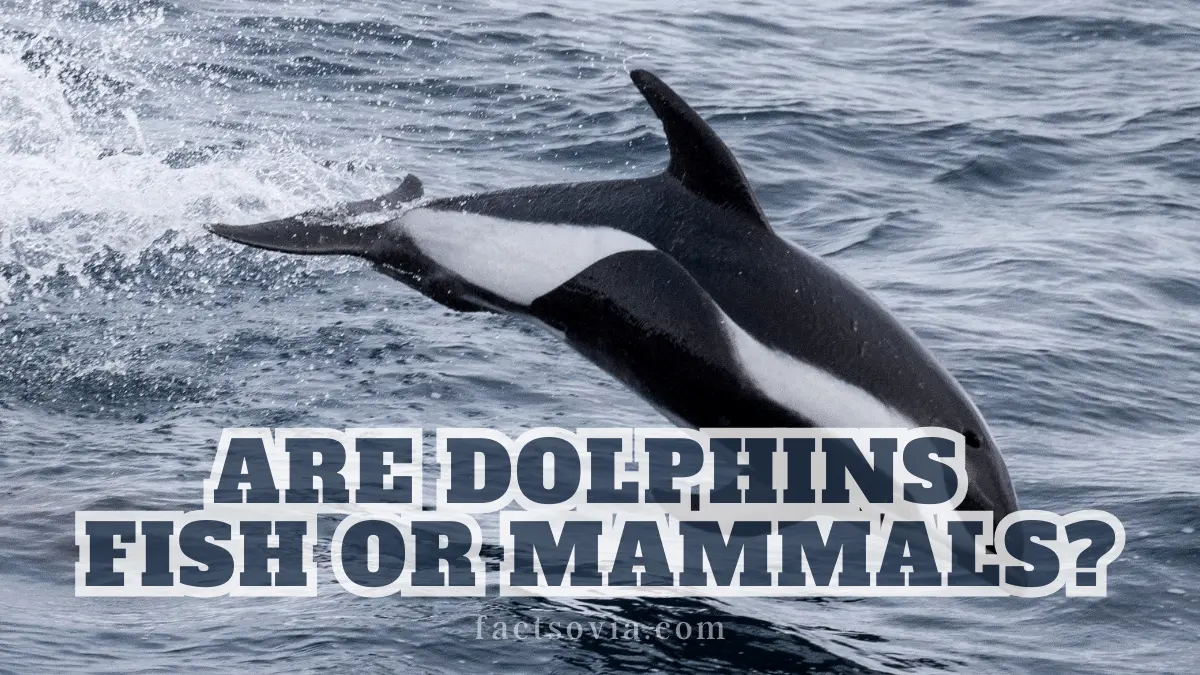We use affiliate links to run our site. When you buy through links on our site, we may earn an affiliate commission, without any added cost to you. Learn more
For centuries, people have marveled at the intelligence, beauty, and grace of dolphins. But one question remains: Are dolphins fish or mammals?
The answer may seem obvious at first glance. After all, dolphins live in the ocean and swim like fish. But beneath the surface, dolphins share more traits with mammals than fish.
In this blog post, we’ll delve into the science behind dolphin classification. We’ll explore their physical features, behavioral traits, and reproductive habits. We’ll also compare them to fish and discuss the misconceptions that have led some people to believe dolphins are not mammals.
By the end of this post, you’ll have a clear understanding of why dolphins are classified as mammals. You’ll also appreciate the unique adaptations that make dolphins so well-suited to their aquatic environment.
Why It Matters:
Categorizing dolphins properly is about much more than settling a debate. It helps us understand their anatomy, behavior, evolution, and place in the biodiversity of the oceans.
This knowledge is key for preserving dolphin populations and managing fisheries in ways that minimize harmful bycatch.
When dolphins are mislabeled as fish, they lose legal protections granted to marine mammals. Any damage done to populations could have cascading impacts on the entire marine ecosystem.
Plus, recognizing their high level of intelligence is crucial to providing ethical treatment of these sentient beings. Knowing where dolphins truly belong transforms how we view and protect marine life.
The differences Between A Dolphin and a Fish

| Dolphins | Fish |
|---|---|
| Mammals | Fish |
| Breathe air using lungs | Extract oxygen from water through gills |
| Have a blowhole on top of their head for breathing | No blowhole |
| Give birth to live young | Lay eggs |
| Feed their young with milk | No milk production |
| Have hair (a small amount around the blowhole) | No hair |
| Warm-blooded | Cold-blooded |
| Have blubber to keep them warm | Adjust to different water temperatures without body fat |
| Tail moves up and down when swimming | Tail moves from side to side when swimming |
| Communicate using whistling sounds through their blowhole | No specific sound communication |
| More closely related to humans than fish | Not closely related to humans |
The Basics of Classification
Taxonomy 101:
| Dolphin | Fish |
|---|---|
| Kingdom: Animalia | Kingdom: Animalia |
| Phylum: Chordata | Phylum: Chordata |
| Class: Mammalia | Class: Actinopterygii (ray-finned fish) or Chondrichthyes (cartilaginous fish) |
| Order: Artiodactyla | Order: Varies depending on the type of fish |
| Infraorder: Cetacea | Infraorder: Varies depending on the type of fish |
| Family: Delphinidae | Family: Varies depending on the type of fish |
| Subfamily: Delphininae | Subfamily: Varies depending on the type of fish |
| Genus: Tursiops (bottlenose dolphin) | Genus: Varies depending on the type of fish |
| Species: Tursiops truncatus (bottlenose dolphin) | Species: Varies depending on the type of fish |
Taxonomy is the branch of biology focused on classifying all living organisms. The modern taxonomic system organizes life into groups called domains, kingdoms, phyla, classes, orders, families, genera, and species.
This hierarchical system was introduced by Carl Linnaeus in the 18th century. The higher levels look at broad similarities, while the lower levels focus on subtle differences.
The two main kingdoms are plants and animals. Vertebrates (animals with backbones) are further divided into classes like mammals, birds, reptiles, amphibians, and fish.
Do Dolphins Lay Eggs?
Fish vs. Mammals:
The fish and mammal classes diverge in many significant ways.
Fish live their whole lives underwater, breathe using gills, are cold-blooded, lay eggs, and have scales. Mammals mostly live on land, breathe air using lungs, are warm-blooded, give live birth, and have hair or fur.
Of course, there are always exceptions that blur the lines. But these key traits help distinguish fishes from mammals in general.
Characteristics of Dolphins

Physical Features:
- Dolphins have smooth, rubbery skin without scales. Their torpedo-shaped bodies are adapted for speed and agility in the water.
- Their forelimbs have evolved into flippers and they have a tail fin called a fluke for propulsion.
- Dolphins breathe air through a blowhole on the top of their heads.
- They also have a layer of blubber to retain heat in chilly ocean depths.
Behavioral Traits:
- Dolphins display intelligence and self-awareness at levels similar to the great apes.
- They live in social groups, communicate using clicks and whistles, cooperate to hunt, and care for their young.
- Dolphins even seem capable of playfulness, altruism, and cultural learning. Their large, complex brains allow a level of smarts unusual among animals.
Reproduction and Parenting:
- Dolphins give birth to live young and drink milk from the mother’s mammary glands.
- Newborns surface immediately to take their first breath.
- After a long nurturing period, calves gradually gain independence but remain within their mother’s group.
- Dolphin parenting involves years of care, communication, and socialization preparing the next generation.
19 Types of Dolphin Species That Will Blow Your Mind!
Characteristics of Fish
What Is a Fish?
Fish are aquatic vertebrates that possess gills, fins, scales, and laid eggs. Jaws, limbs modified as fins, and a lateral line system detecting vibrations are also characteristic. There are over 30,000 fish species, more than all mammals, birds, and reptiles combined. They display astonishing diversity in size, color, behavior, and habitat.
Different species of fish:
The vast fish class includes jawless hagfishes, cartilaginous sharks and rays, along with bony fish like tuna, seahorses and tiny gobies. Various species have evolved sophisticated adaptations for their specialized niches.
Many fish display intelligence and problem-solving abilities scientists are still discovering. So lumping them together oversimplifies fish complexity and diversity.
Anatomy:
The bodies of dolphins and fish are both superbly adapted to aquatic life. However, dolphins have lungs to breathe air, warm blood, blubber layers, and give live birth to young. Fish have gills, cold blood without insulation, lay eggs, and are covered in scales.
Dolphins share most physical traits with land mammals, while fish have anatomy tailored strictly to water.
The Misconceptions
Historical Beliefs:
Aristotle first grouped dolphins with fish, a perspective that persisted for centuries. Sea travelers viewed them as big fish that lived in herds. Religious dietary restrictions also led to classifying dolphins as fish.
Their aquatic habits obscured mammalian traits difficult to observe firsthand in past eras. Only through systematic study have dolphins’ live births, mammary glands, and warm blood come to light.
Despite scientific consensus, confusion persists today fueled by casual observation. Dolphins look superficially more like sharks and tuna than cows. Calling them “porpoises” or “pilot whales” implies a closer relationship to fish.
Focusing solely on their ocean lifestyle while ignoring anatomical, evolutionary, and behavioral evidence has perpetuated false assumptions. Public education is still needed to dispel lingering misperceptions.
The Scientific Perspective

DNA Evidence:
Genetic analyses have confirmed dolphins are more closely related to even-toed ungulates like pigs and hippos than any fish species.
Evolutionary tree diagrams based on DNA show that cetaceans (whales and dolphins) branched off from land mammals around 50 million years ago.
Genomic studies are the smoking gun proving whales and dolphins are mammals that returned to the water long after early mammals emerged on land.
Molecular Evidence:
Biochemical analyses also reveal striking molecular similarities between dolphins and other mammals.
For example, hemoglobin proteins that transport oxygen in blood are nearly identical. Cytochrome c proteins essential for metabolism are also extremely comparable across mammals.
At the molecular level, whales and dolphins lack key differences that set fish apart.
Evolutionary History:
The fossil record traces cetacean evolution from wolf-like, hoofed ancestors. Over millions of years, cetacean forelimbs evolved into flippers, skulls streamlined and nostrils migrated upward to become blowholes.
Vestigial hip bones still embedded in whale anatomy reflect their terrestrial past. We can observe their mammalian origins through incremental changes recorded in the strata.
14 Fascinating Facts About Dolphins You Never Knew
Adaptations of a Dolphin to Aquatic Life:
To thrive in their watery habitat, dolphins evolved adaptations similar to fish. Hydrodynamic bodies, flippers, blubber, and blowholes equip dolphins for speedy swimming, deep diving, and underwater living.
Echolocation gives them detailed navigational awareness. But unlike fish, dolphins never breathe through gills or have scales. Mammals modified for the marine environment retain mammalian traits.
Communication:
Unable to use visual signals in murky waters, dolphins developed advanced acoustic communication. They generate and perceive a variety of click signals useful for echolocating prey and communicating within social groups.
Fish often use sound in reproductive displays, territorial defense, or attracting mates. So while modes differ, both dolphins and fish communicate underwater effectively.
Reproduction and Parenting
Dolphin mating involves internal fertilization and birth to live young. Newborns drink milk and stay near their mothers during a long dependency stage. Dolphins invest considerable time and resources caring for offspring, a trademark of mammals.
This contrasts with most fish that externally fertilize eggs later abandoned. Parental care among fish is relatively rare.
Fish utilize a wide range of reproductive strategies. Many lay vast quantities of eggs with minimal parental care. Others incubate eggs in their mouths or retain eggs inside their bodies. But no fish experience pregnancy, give live birth, or nourish young with milk.
Their modes of reproduction categorize them squarely as fish rather than mammals.
Why Dolphins Are Mammals
Mammals maintain a near-constant internal body temperature regardless of surroundings, called endothermy. Dolphins have circulatory adaptations that prevent heat loss, allowing warm-bloodedness even in chilly waters.
Fish are ectothermic, meaning their body temperature matches their surroundings. Being cold-blooded is a defining trait of fish not shared by dolphins or mammals.

Breathing Mechanisms:
Perhaps the biggest difference lies in respiration. Mammals like dolphins possess lungs and breathe air, while fish utilize gills to extract oxygen from water.
This major anatomical divergence shows dolphins and fish have very distinct evolutionary origins. Only mammals have the complex lung structures needed to inhale quick breaths at the ocean surface.
Ethical and Conservation Implications
Classifying cetaceans like dolphins as mammals rather than fish is vital for their ethical treatment and conservation. Otherwise, they lose the legal protections of the Marine Mammal Protection Act. Dolphin intelligence and emotional capacity also call for minimizing suffering. Conservation must be grounded in their status as self-aware, cultural beings.
When dolphins are mislabeled as fish, commercial fishing industries lack motivation to reduce bycatch harming dolphin populations. Their status determines fishing practices and quotas, research funding, pollution regulations, and habitat protections.
Corporations have even sued to label dolphins as fish to bypass marine mammal safeguards. Correct classification is crucial for wise stewardship.
Conclusion
After examining all lines of evidence, modern scientists overwhelmingly agree dolphins are mammals, not fish.
Their anatomy, physiology, genetics, evolution, reproduction, intelligence, and warm-blooded metabolism all point to dolphins having a mammalian heritage. Although adapted to the marine environment, dolphins remain mammals in every sense based on observable science.
Clarifying dolphins’ rightful place as mammals compels us to rethink how we treat and protect marine life. Avoiding bycatch, curbing pollution, and mitigating climate change all take on greater importance.
Ethical treatment and welfare of dolphins also demand a higher standard. Ensuring a healthy future for oceans starts with classifying its inhabitants accurately. That includes recognizing lively, intelligent dolphins as fellow mammals.
Amazon and the Amazon logo are trademarks of Amazon.com, Inc, or its affiliates.
